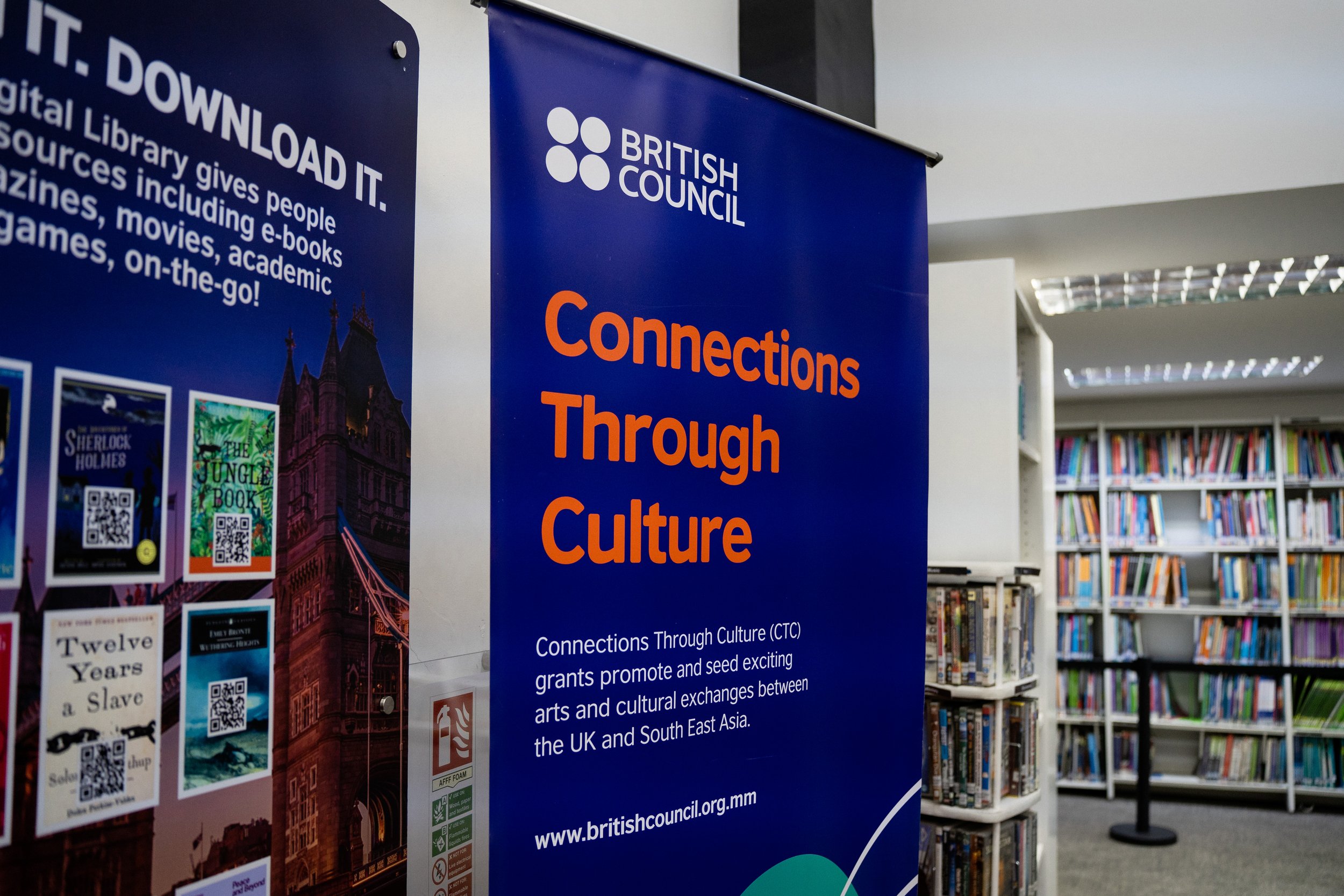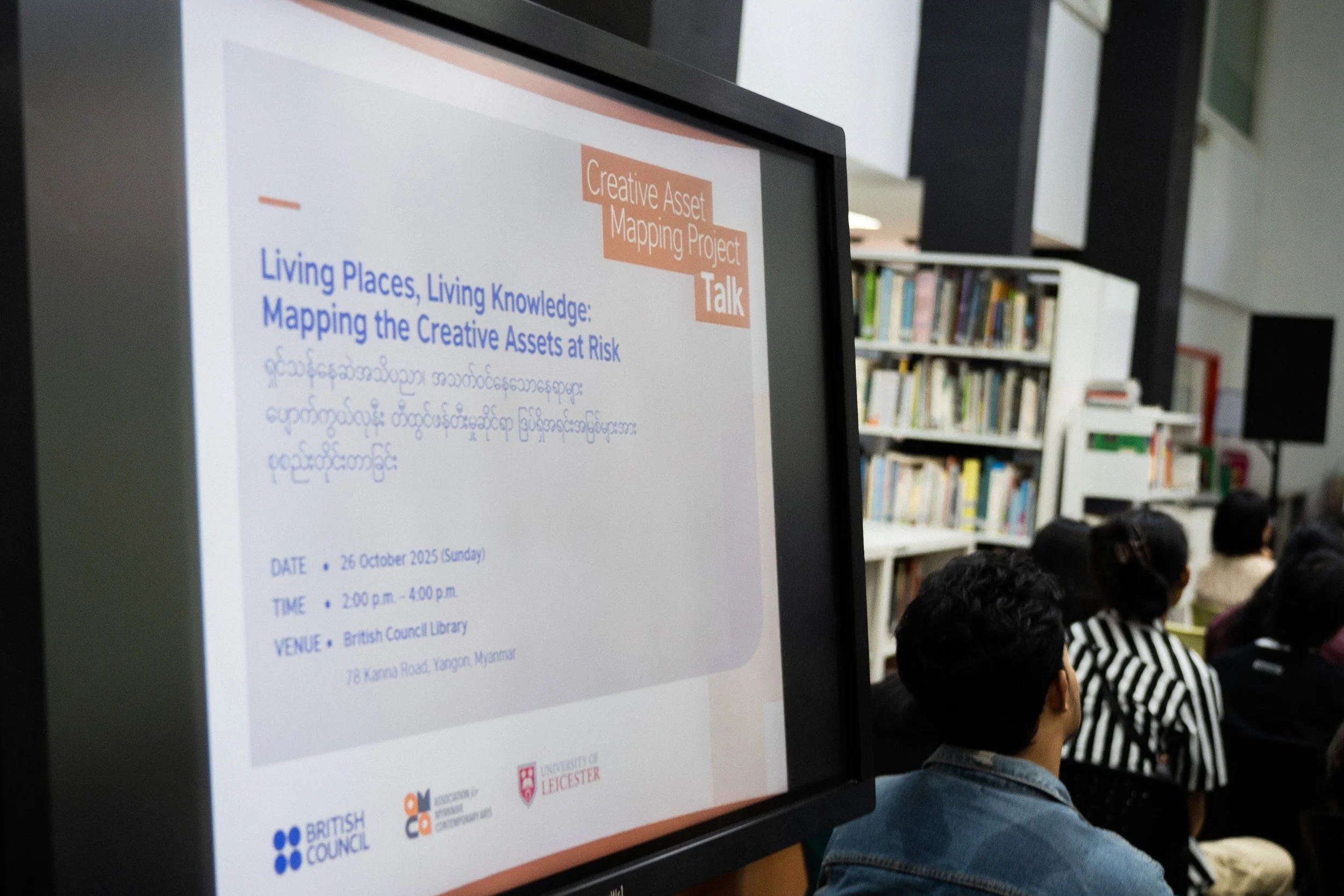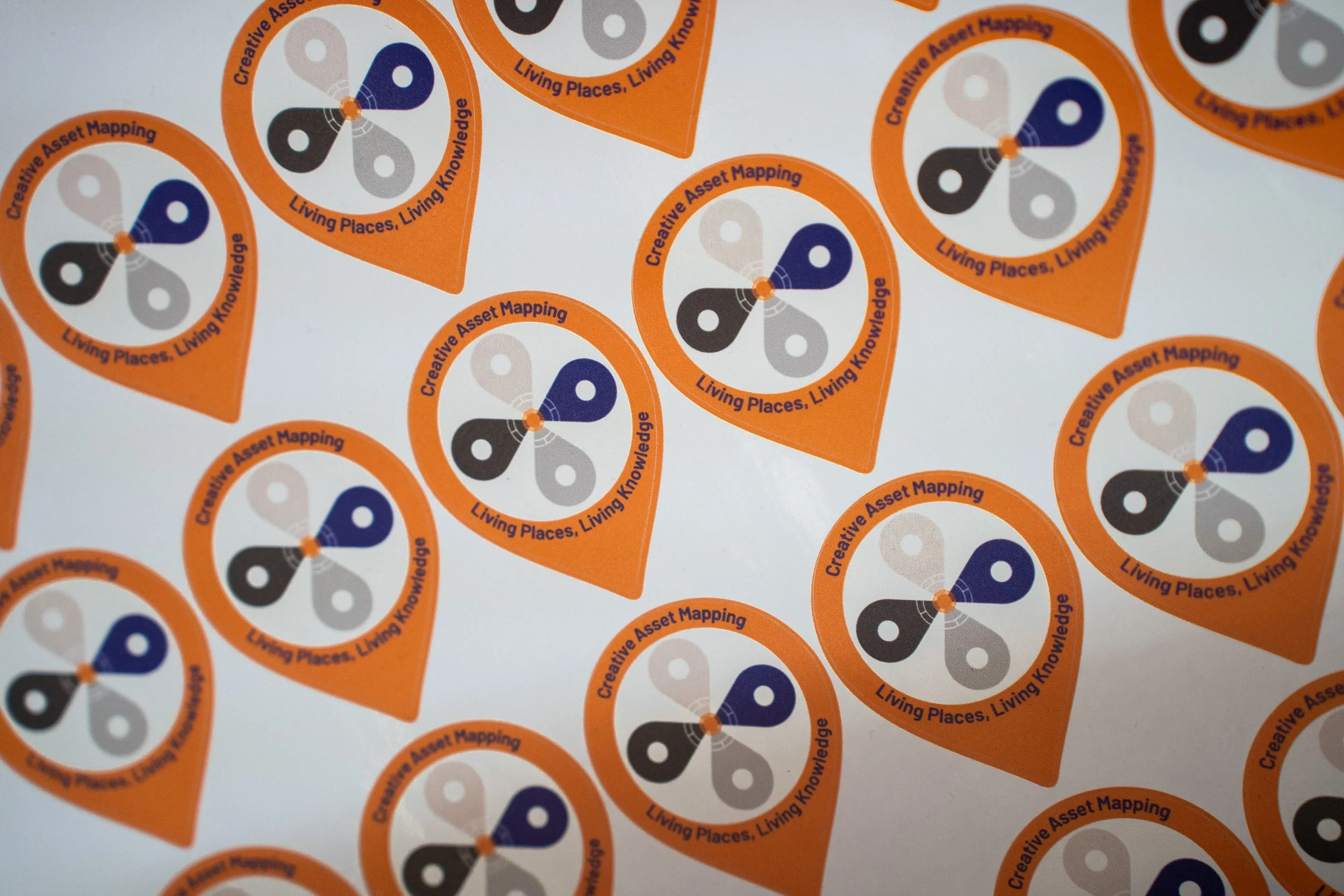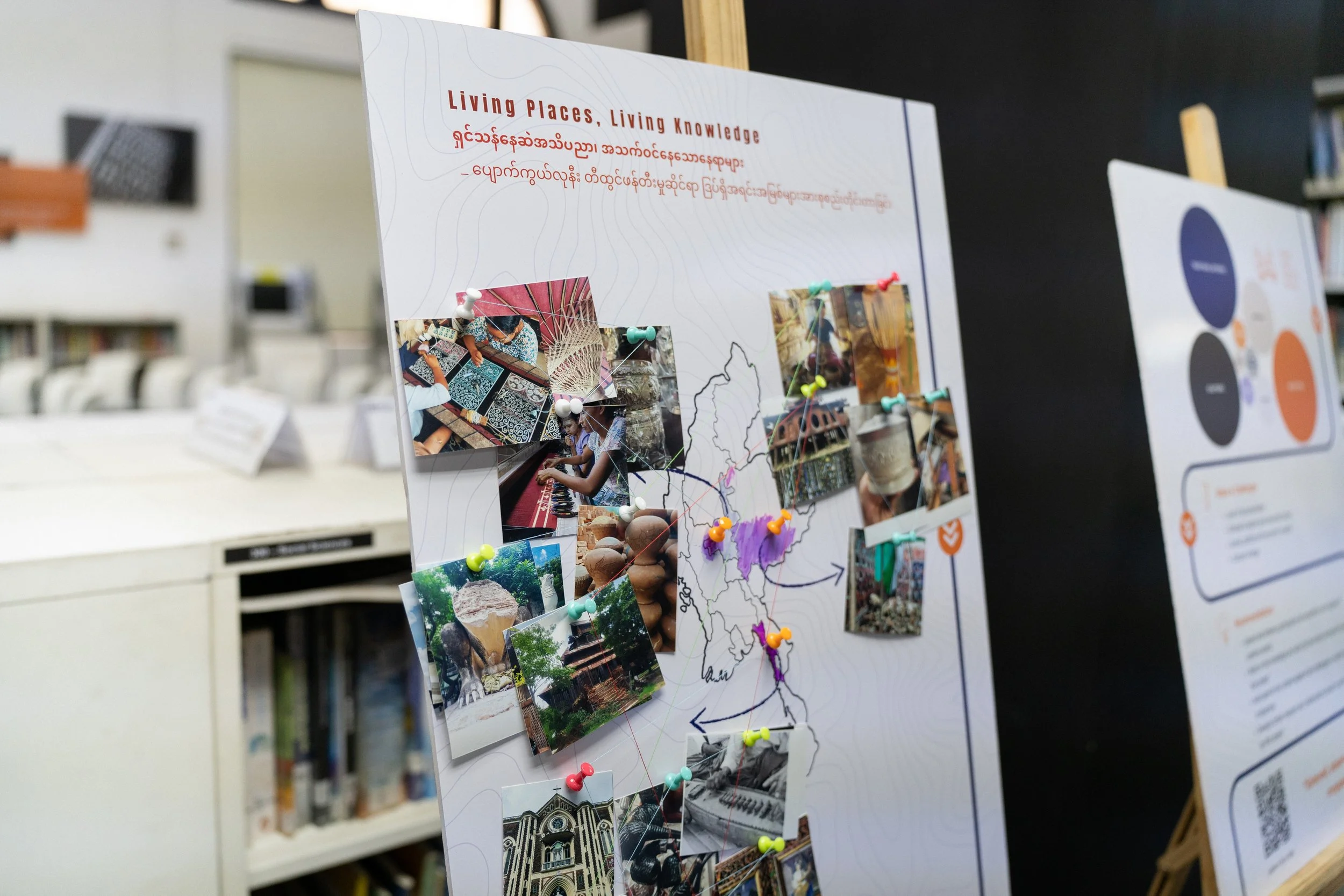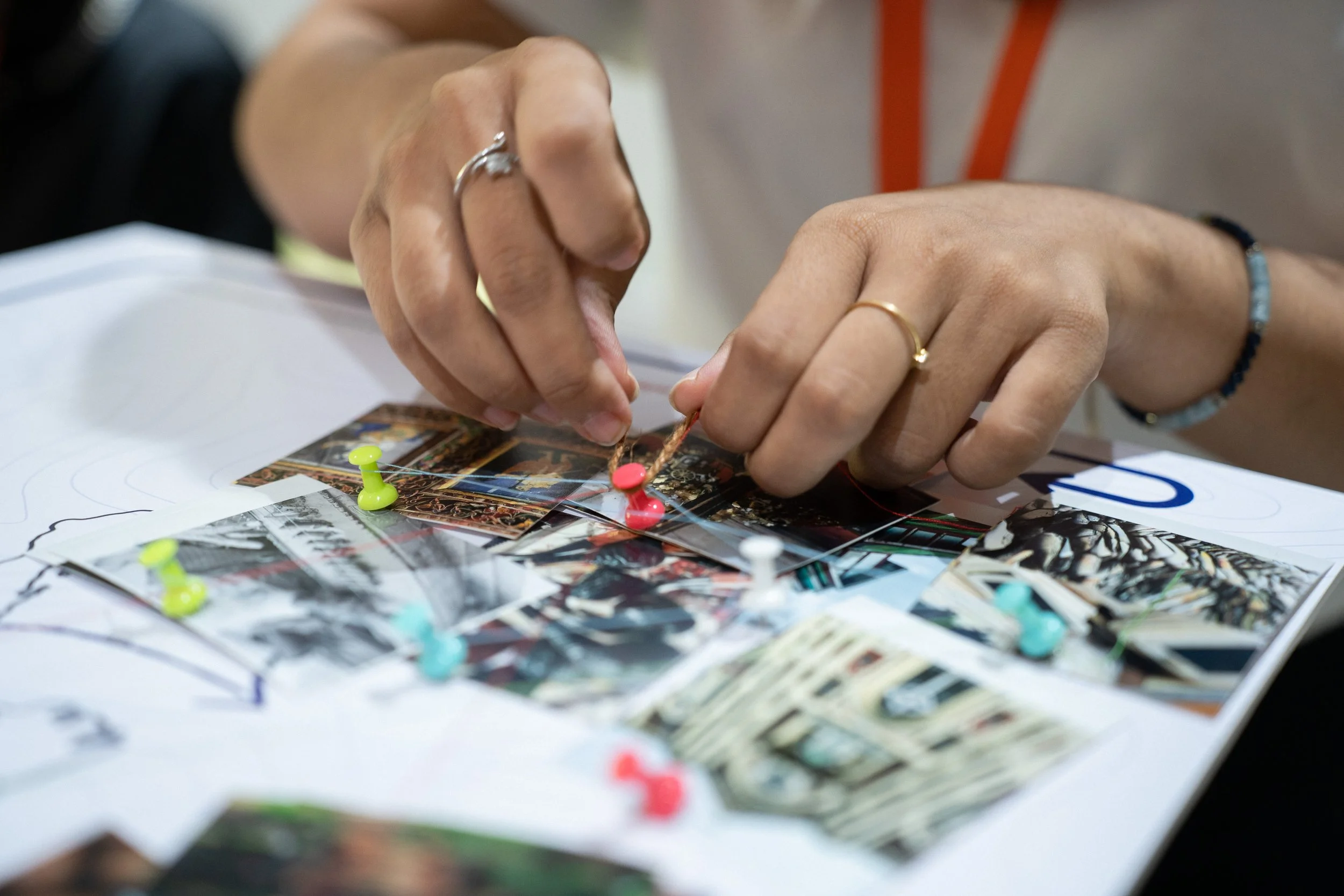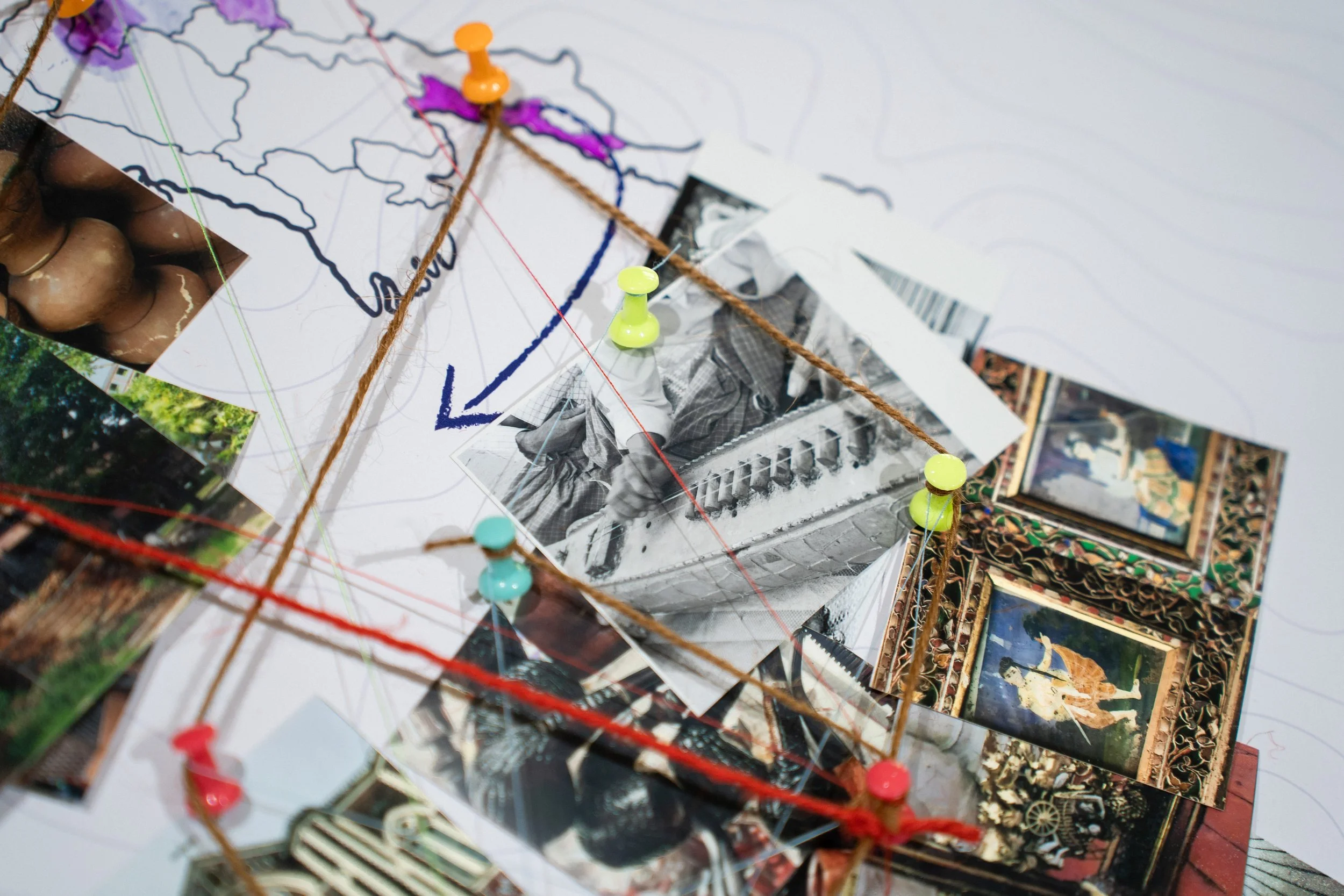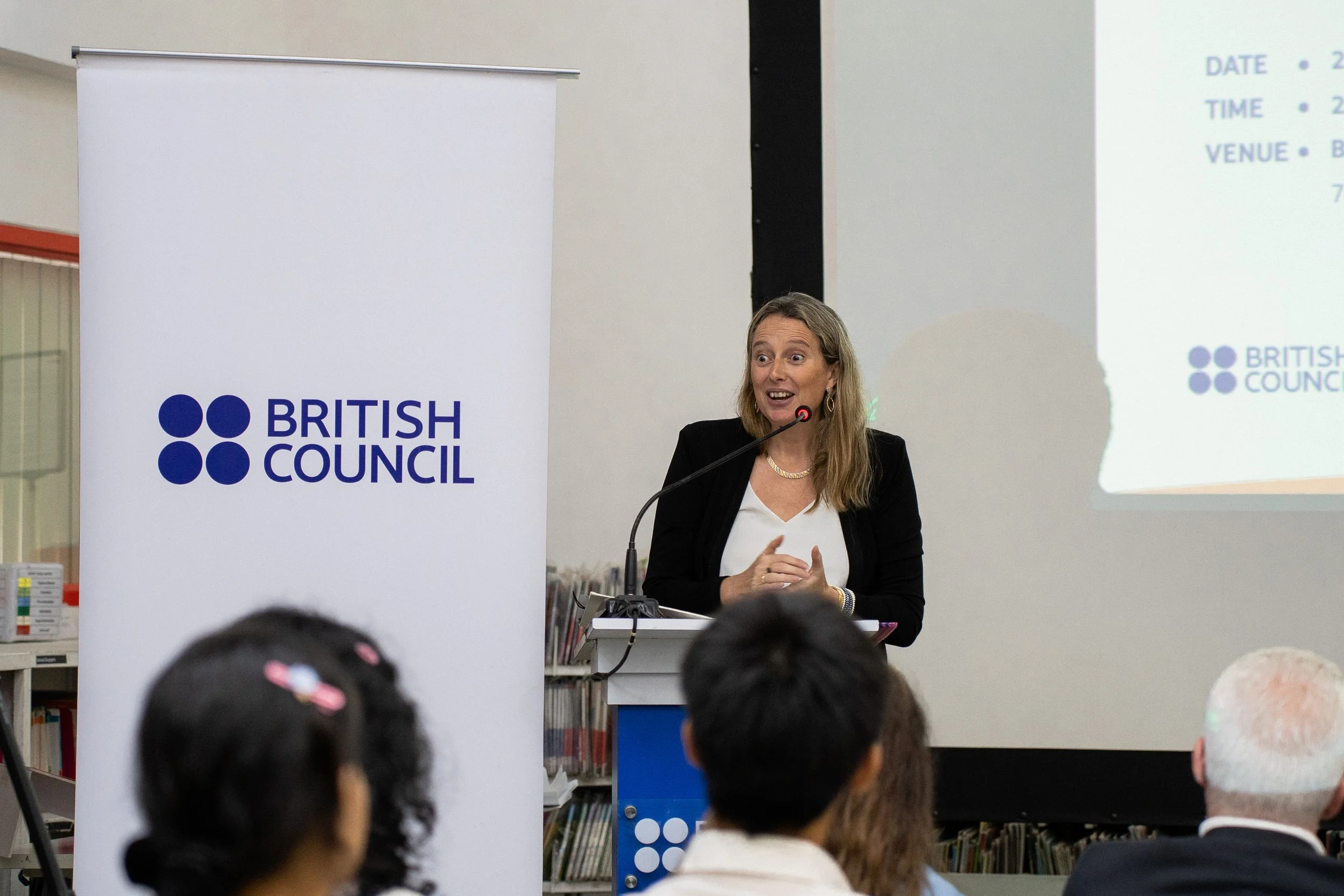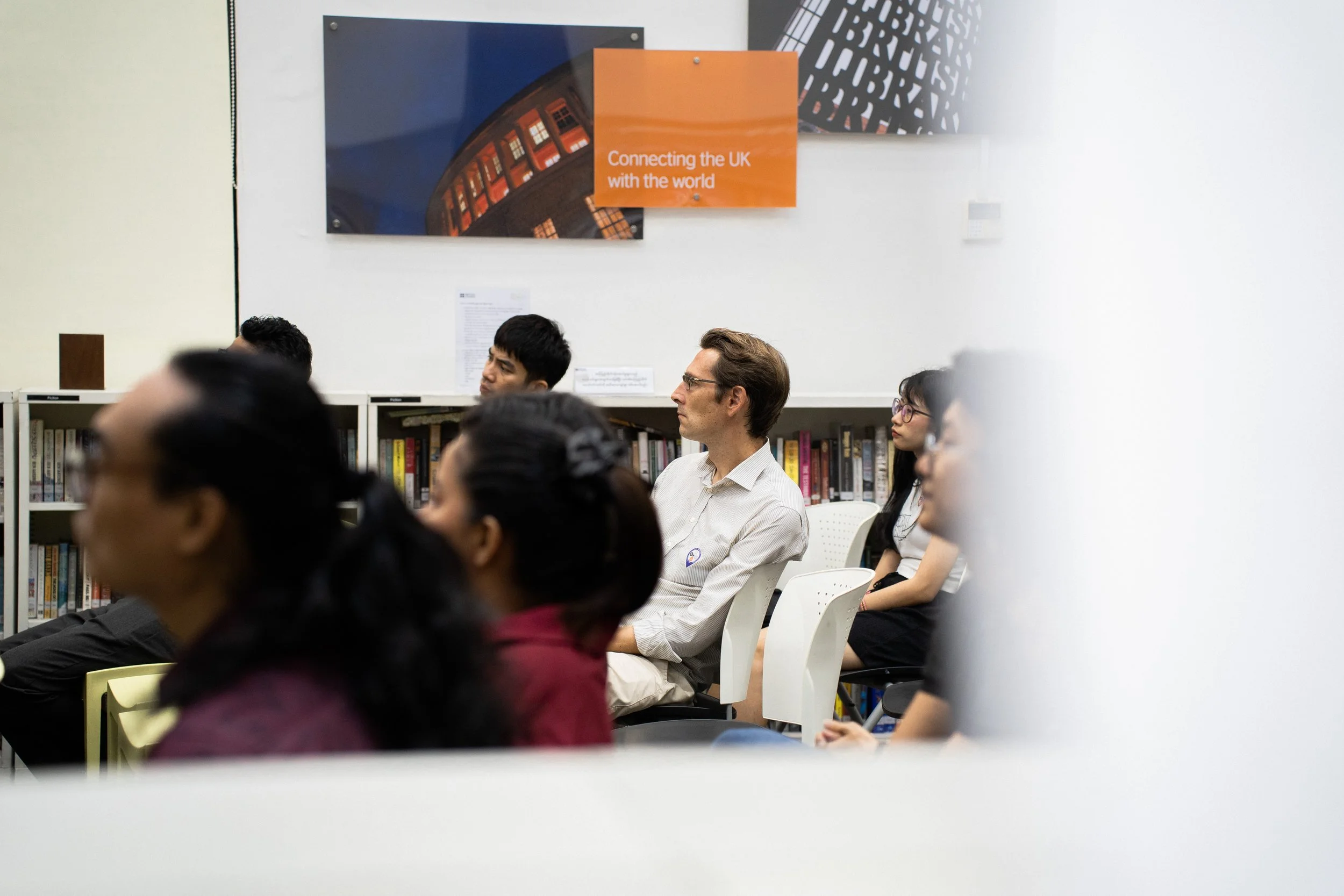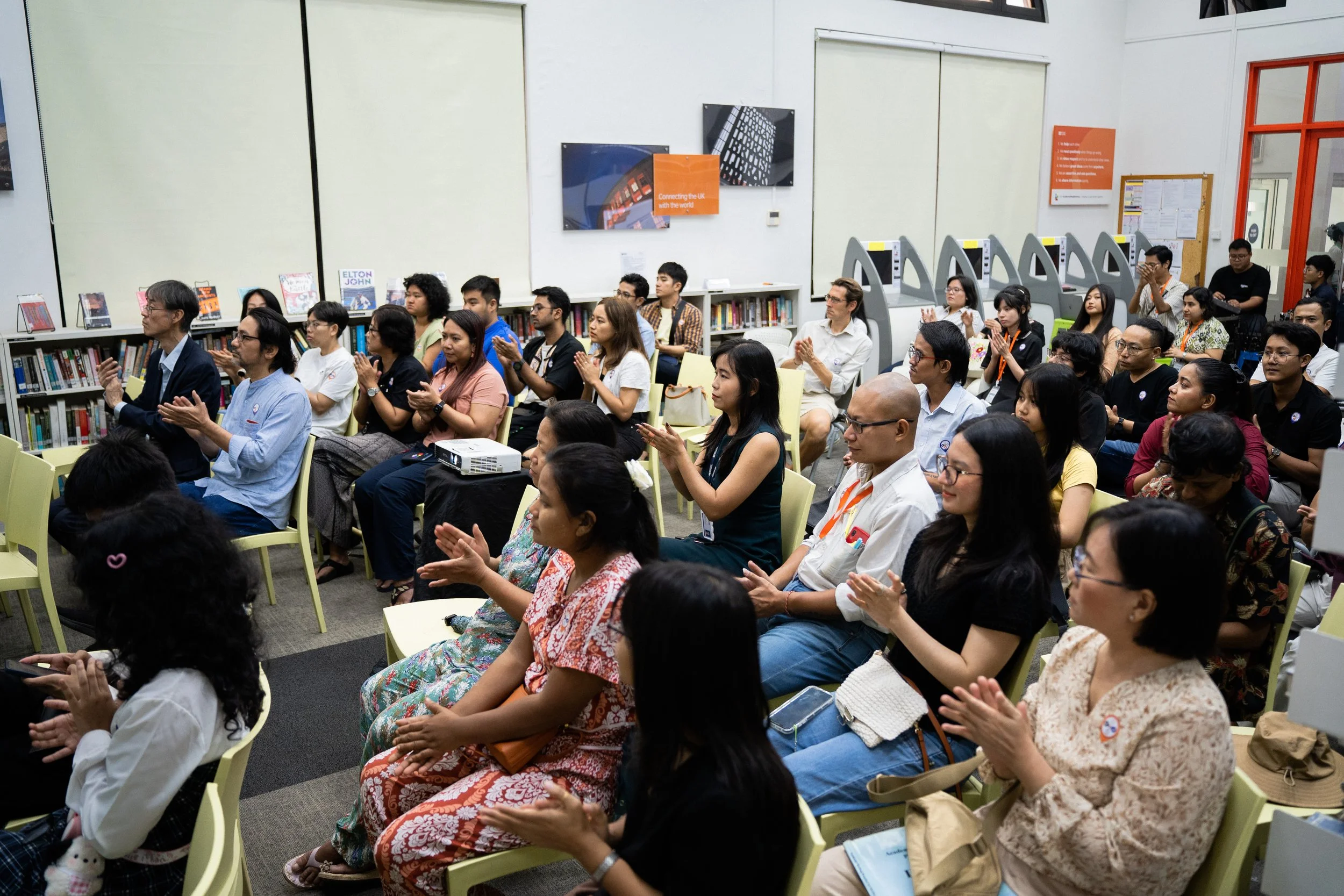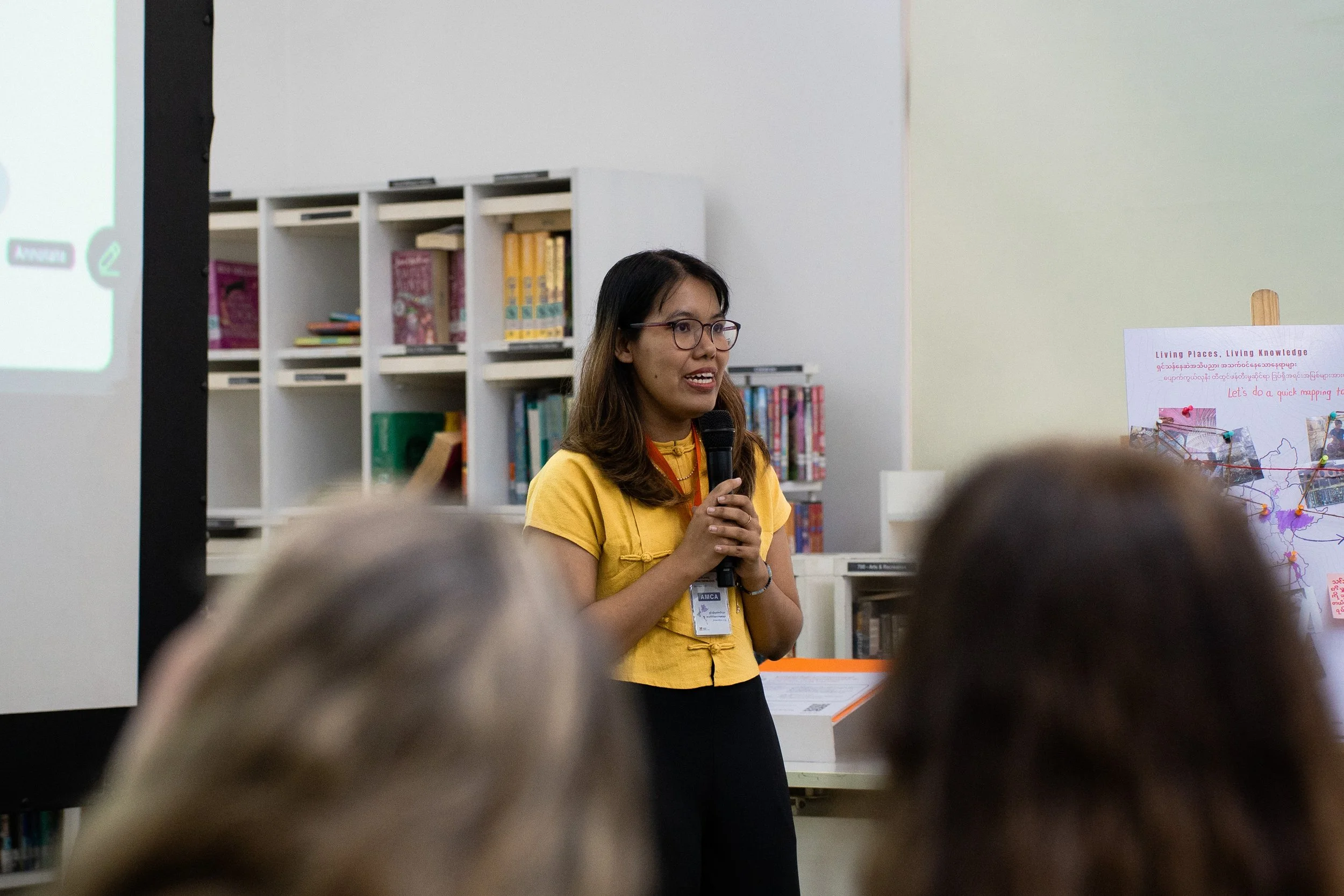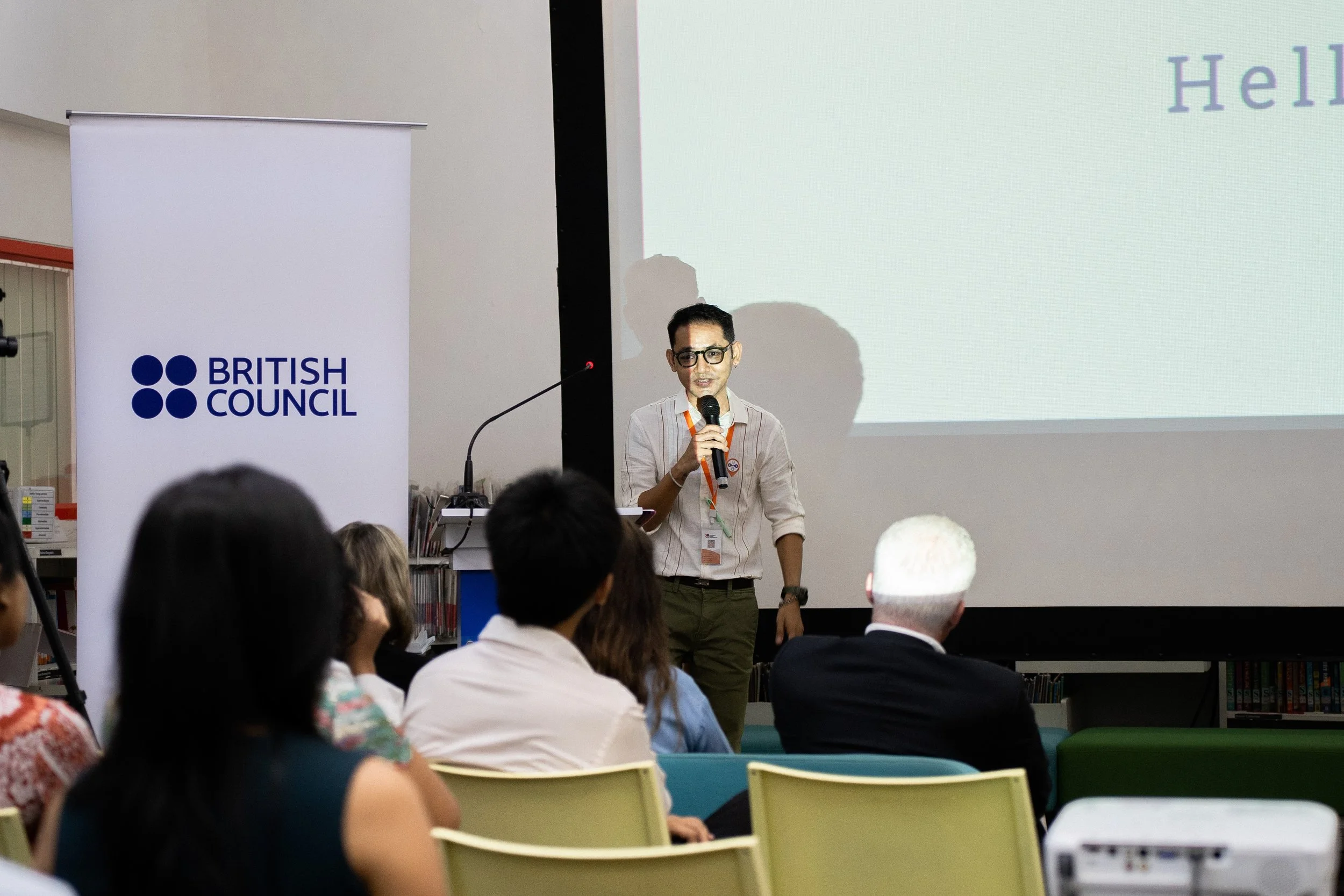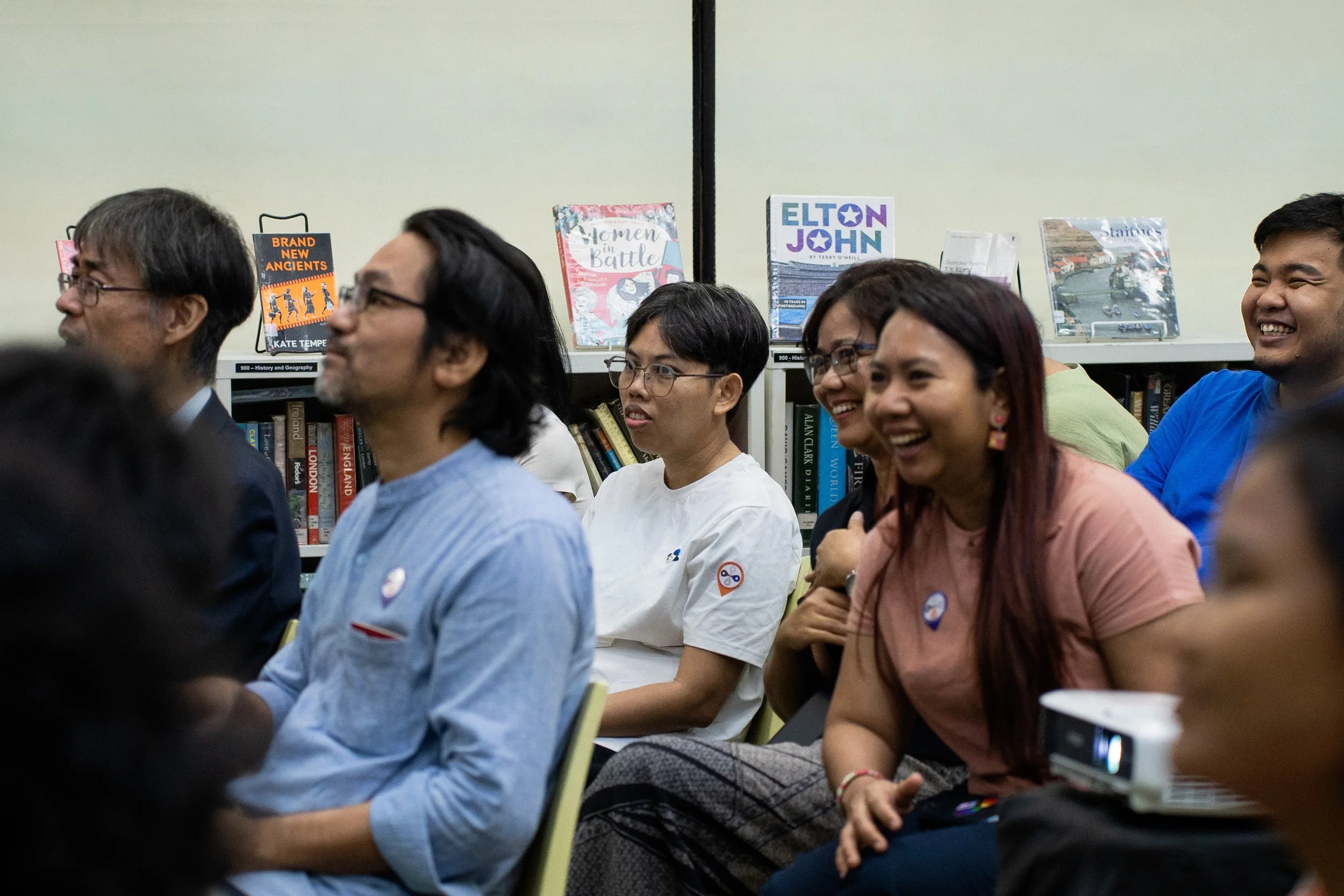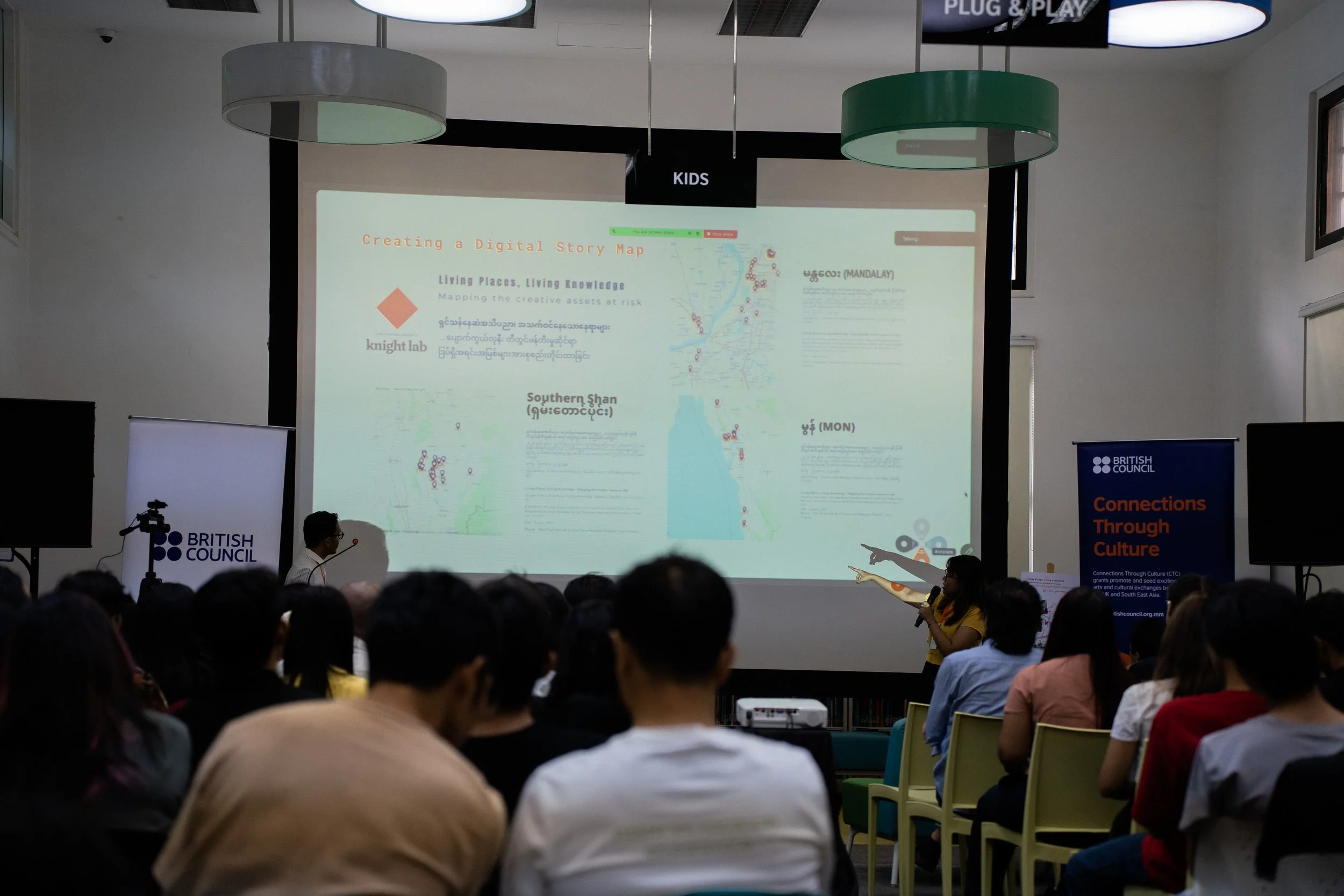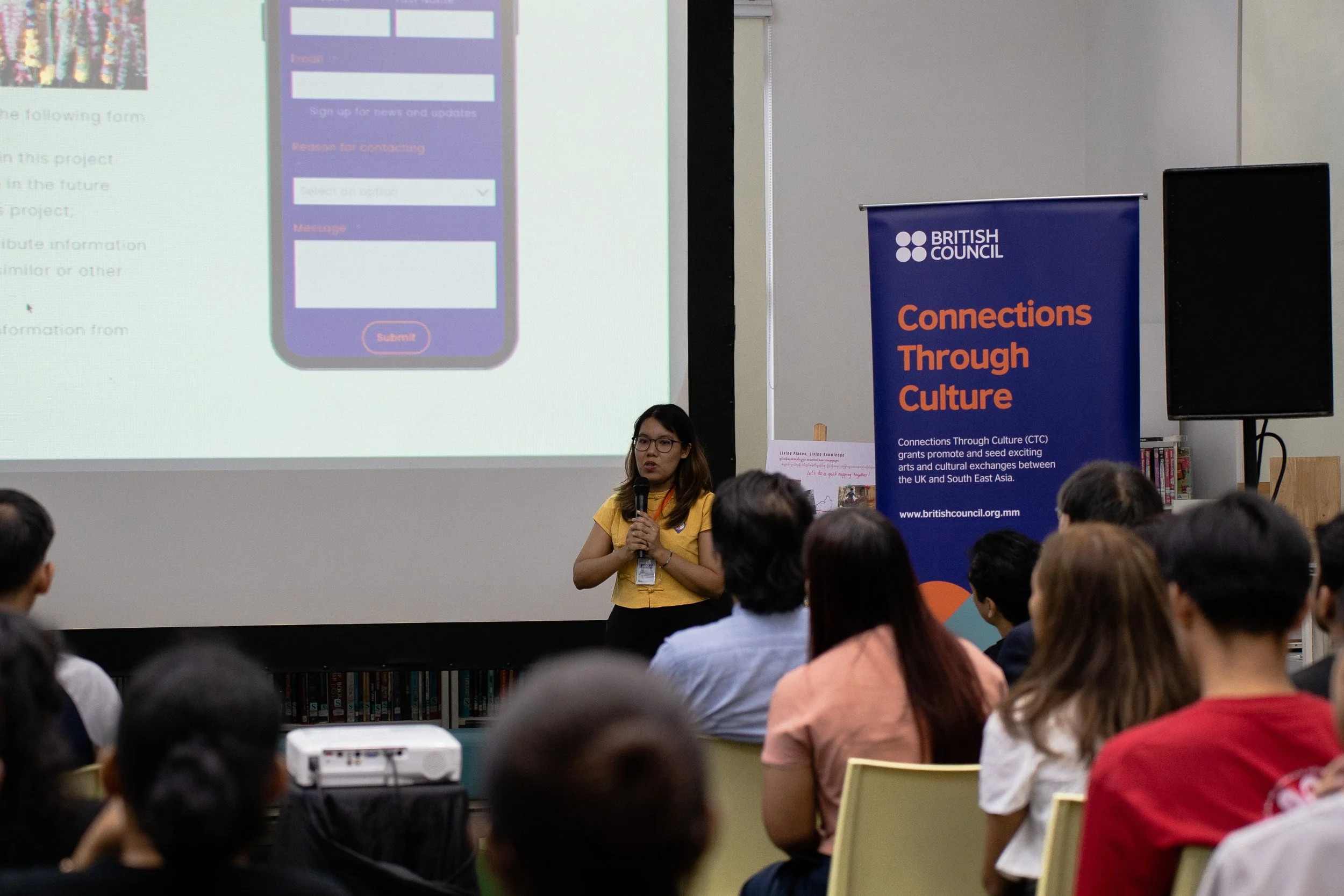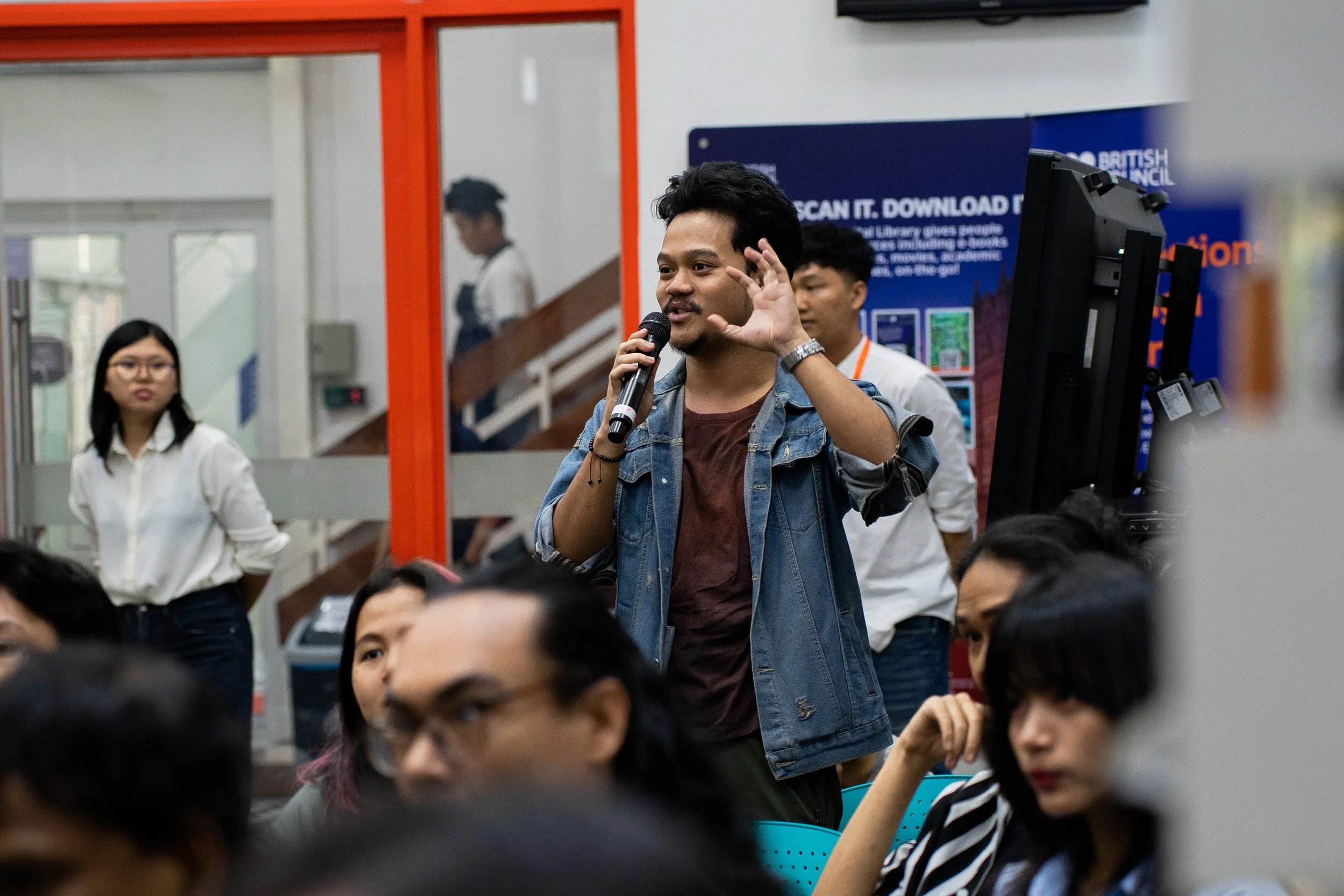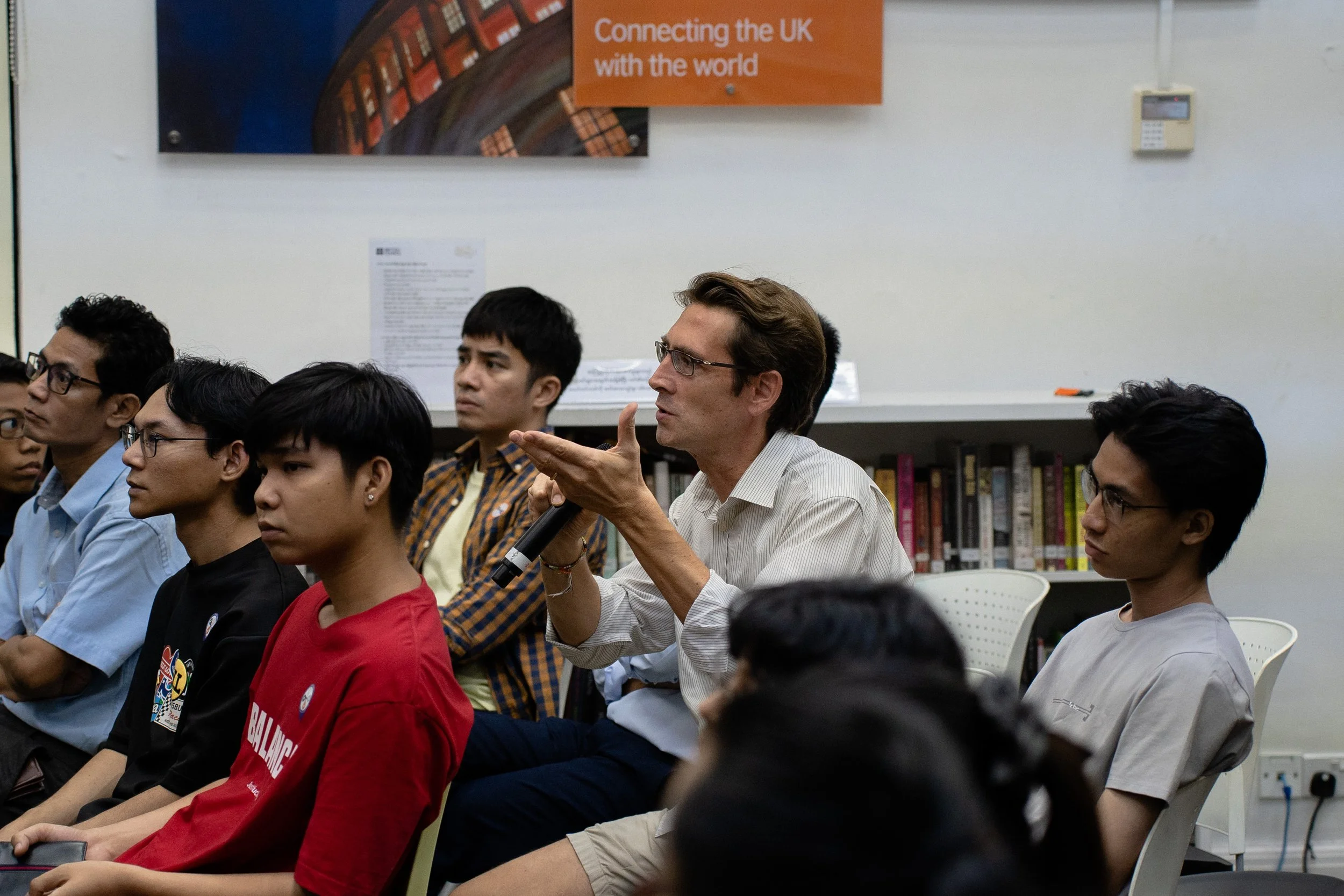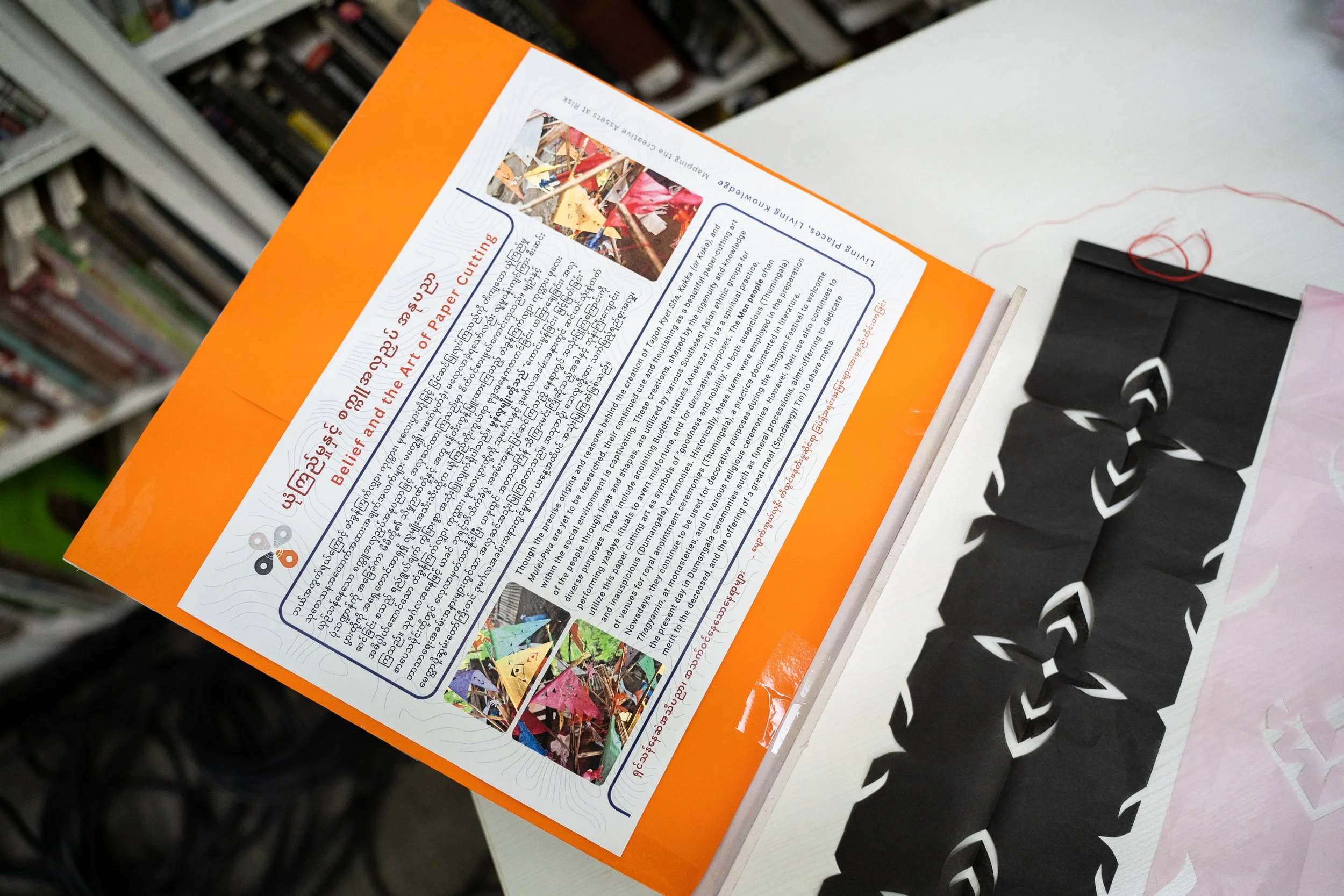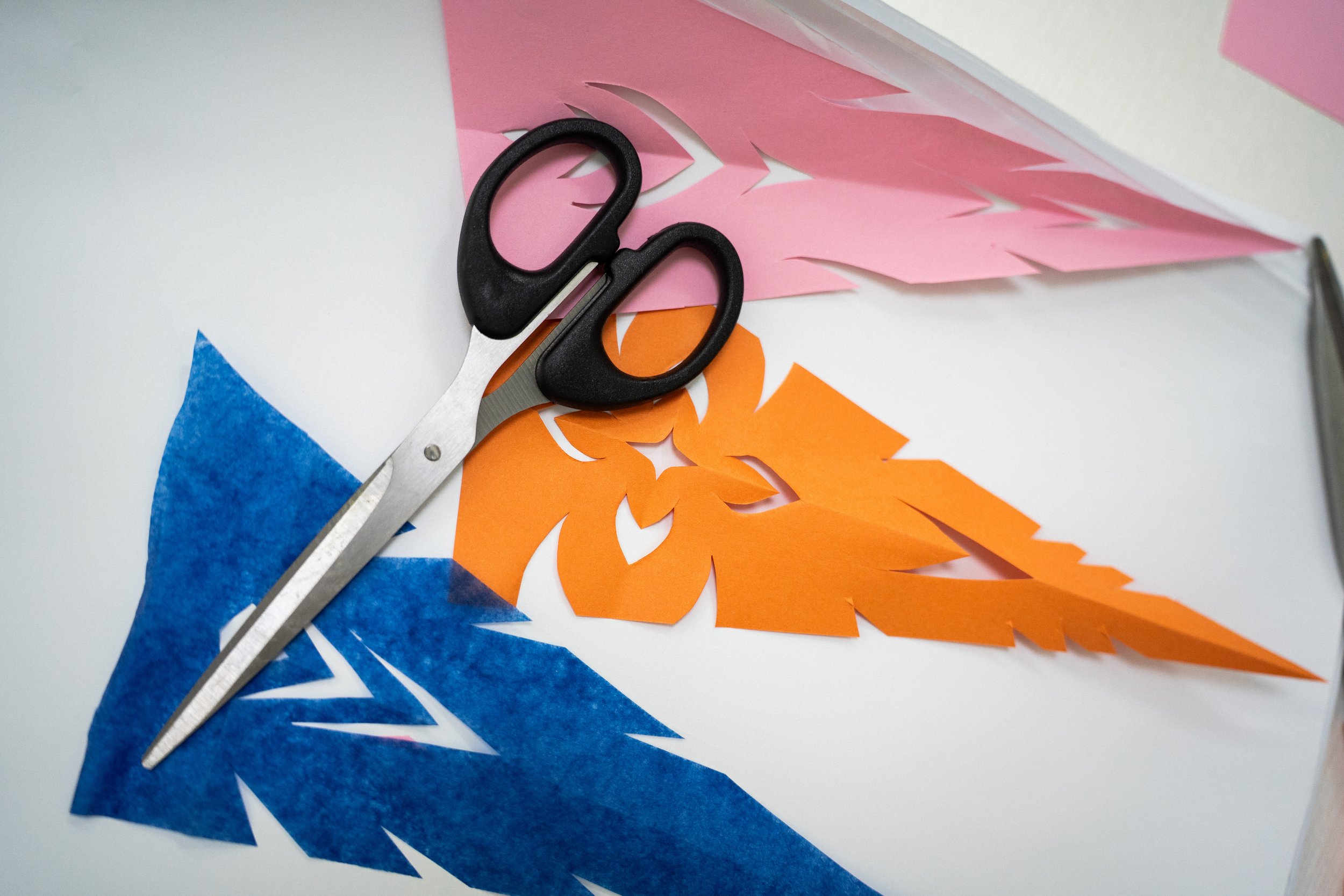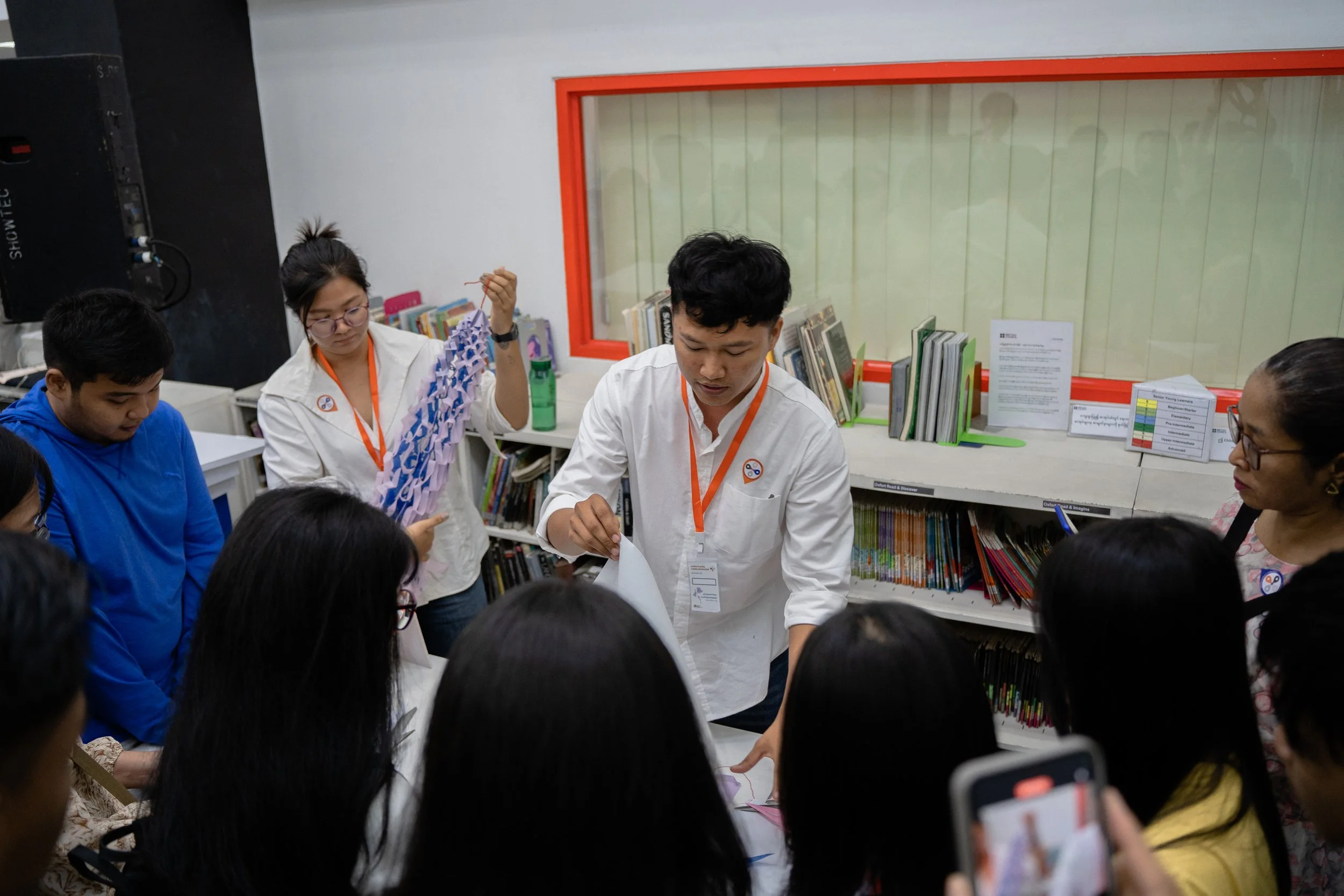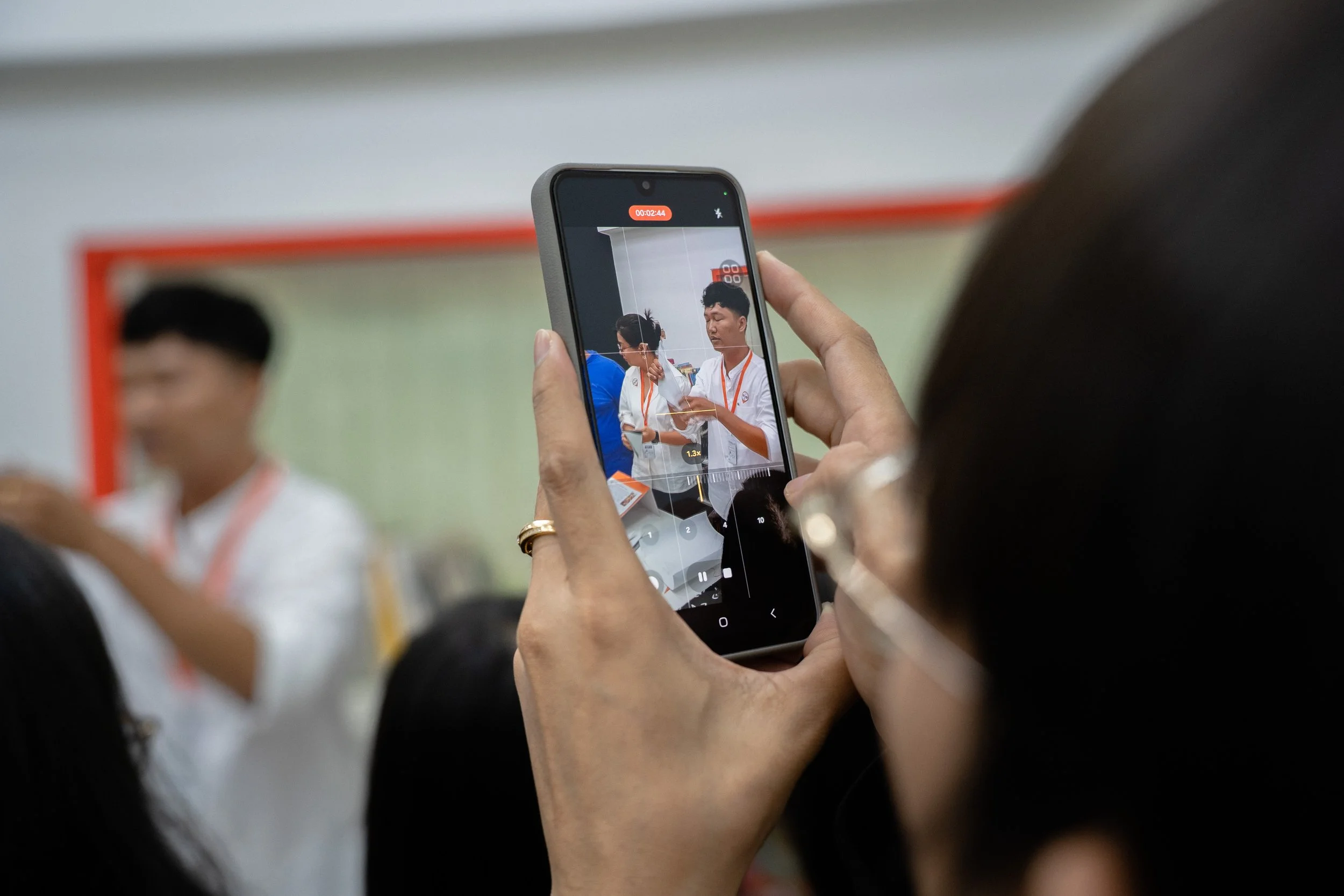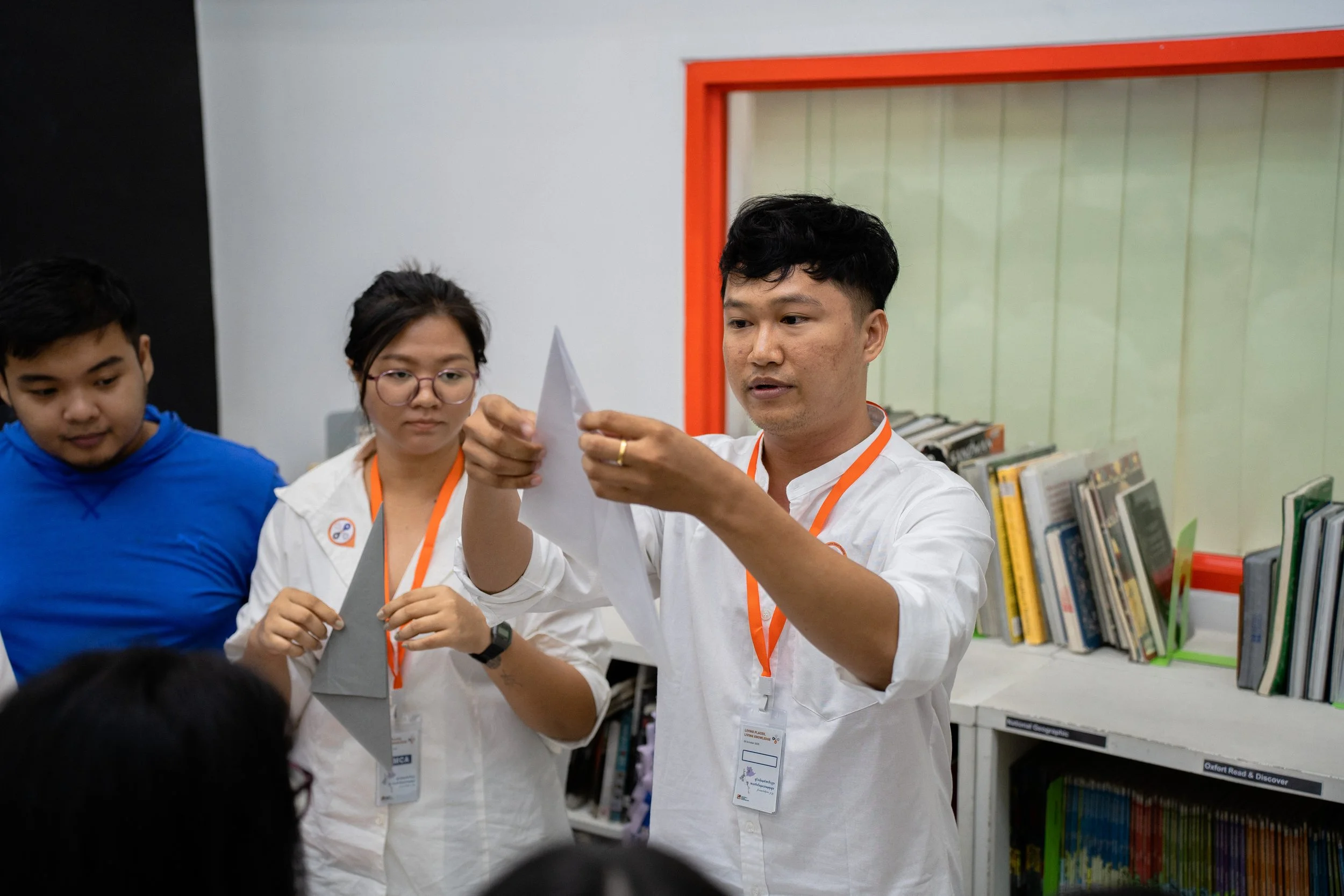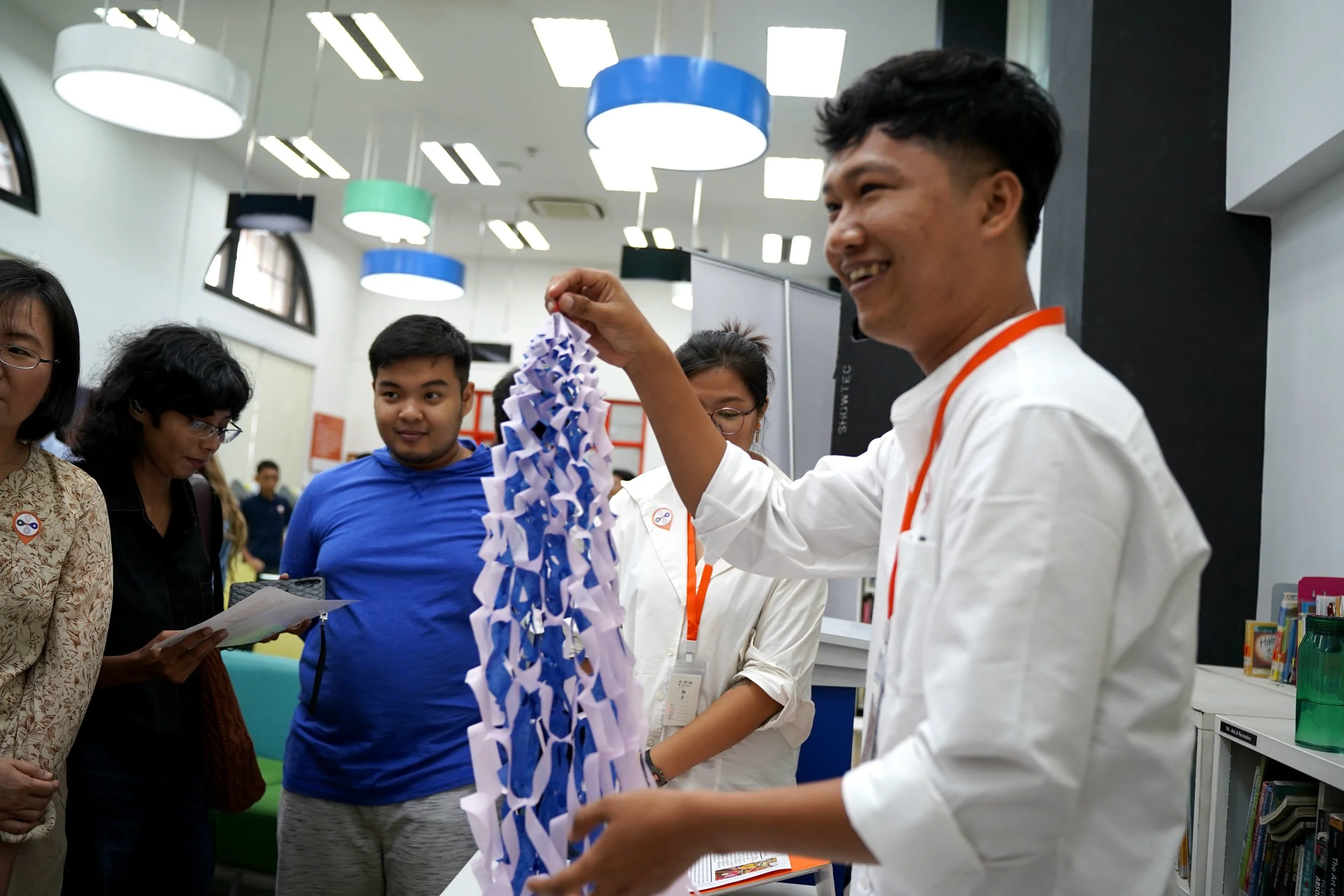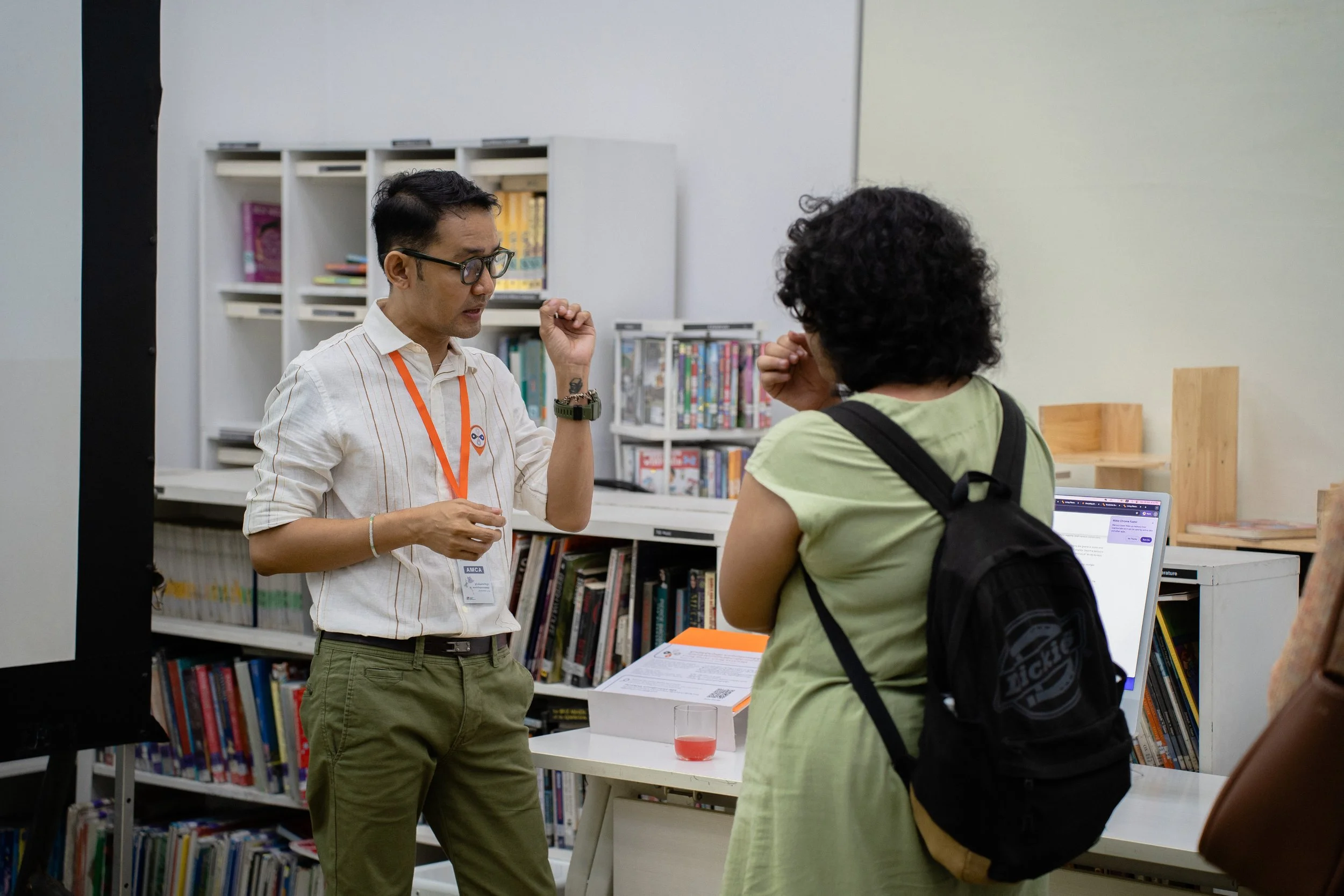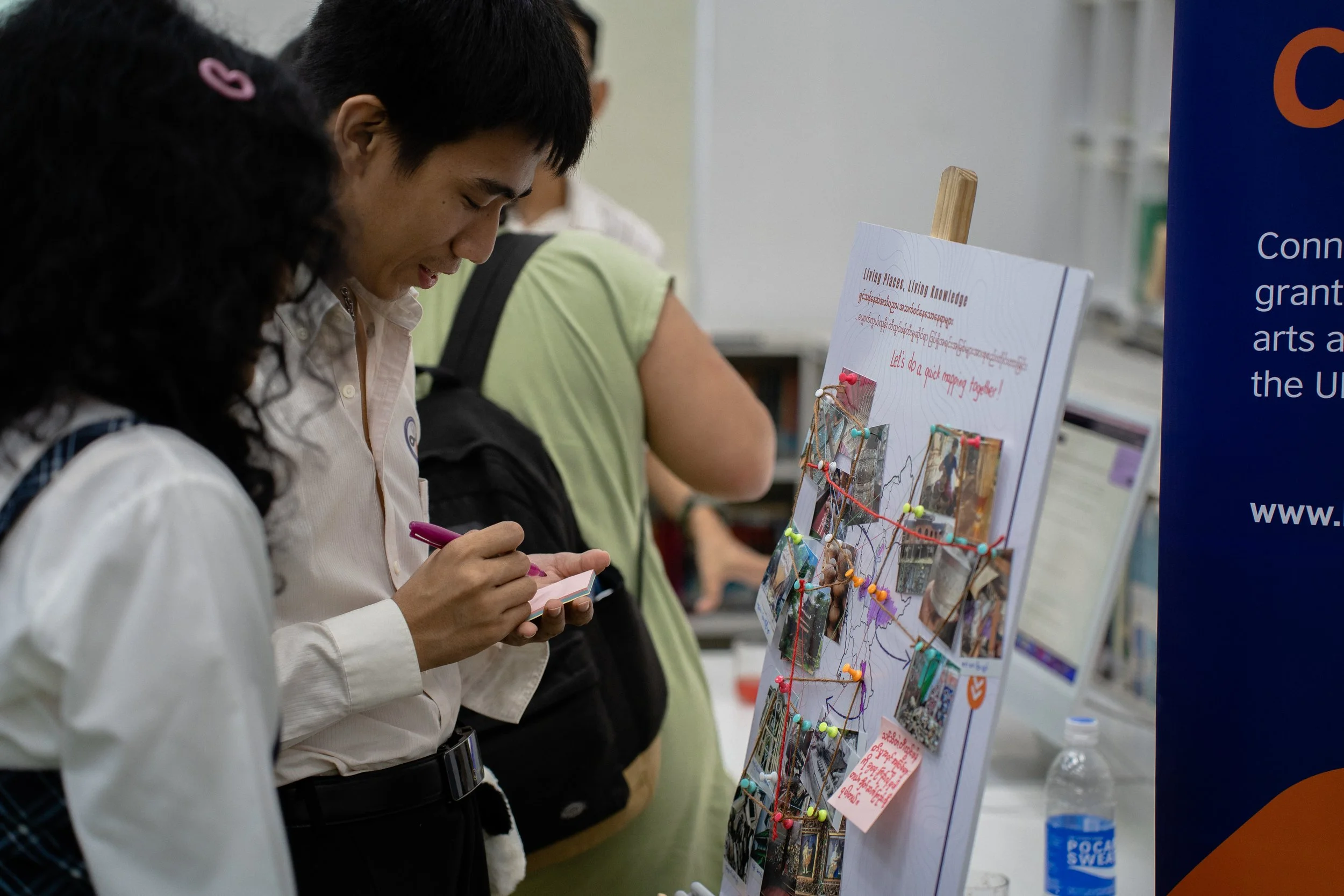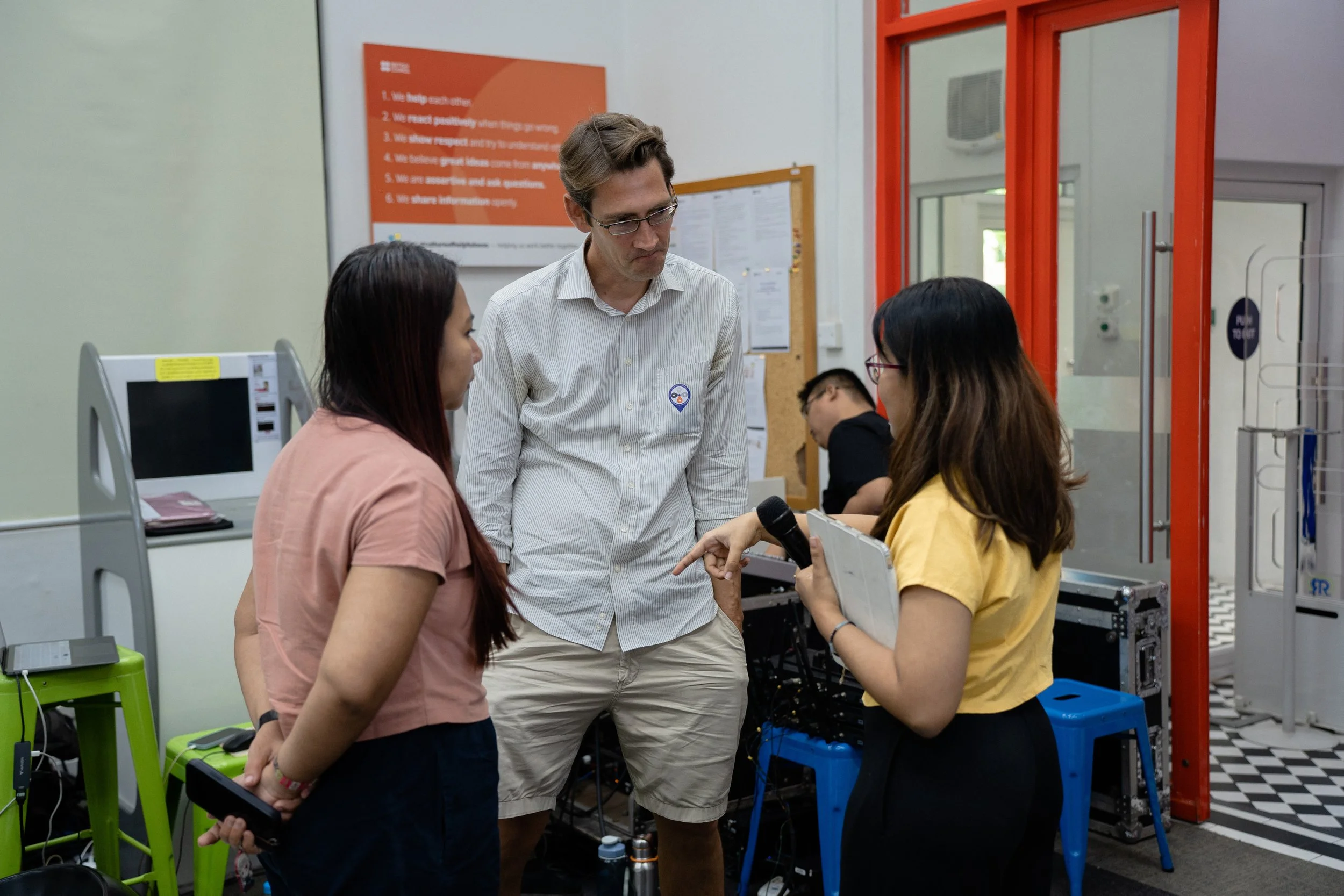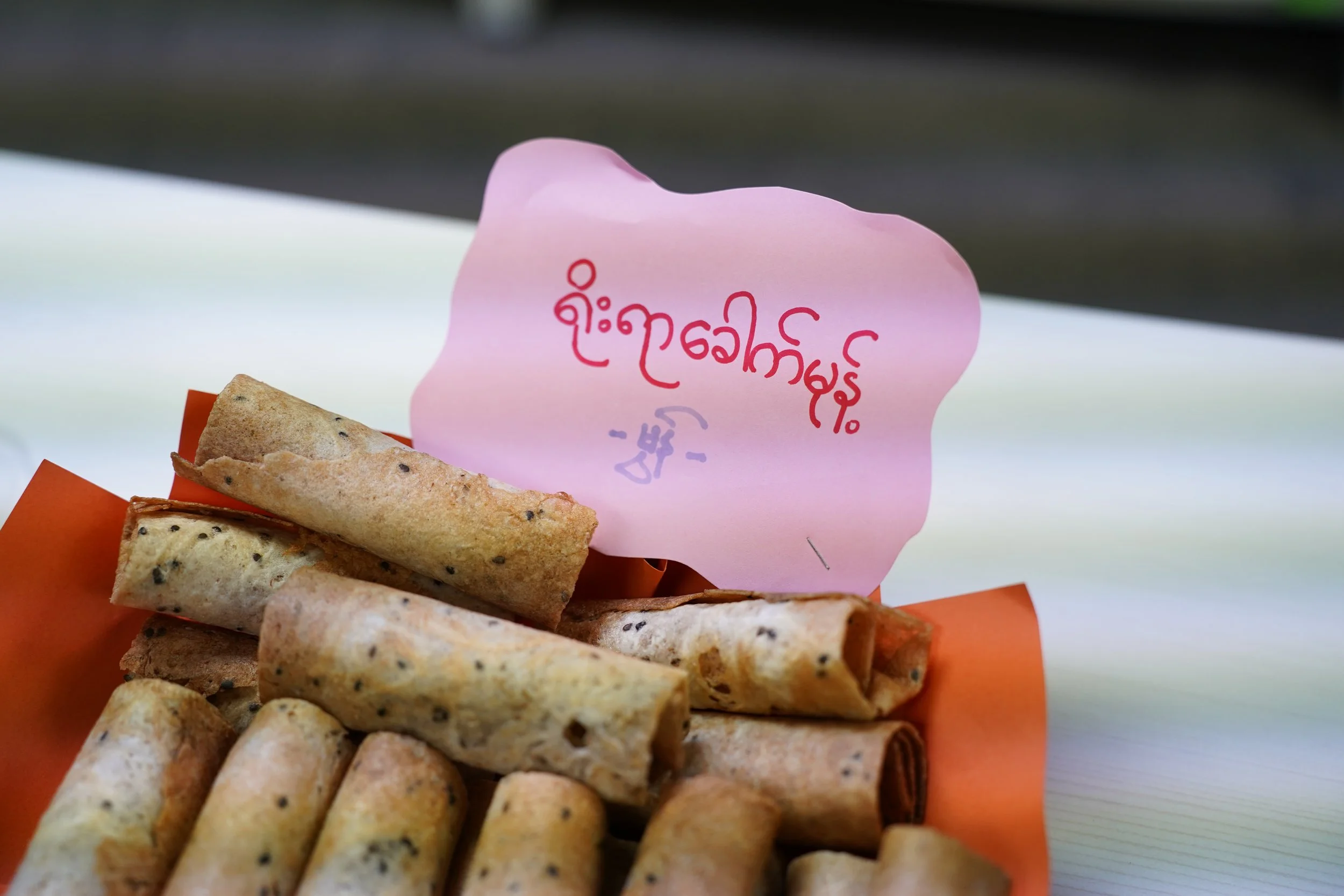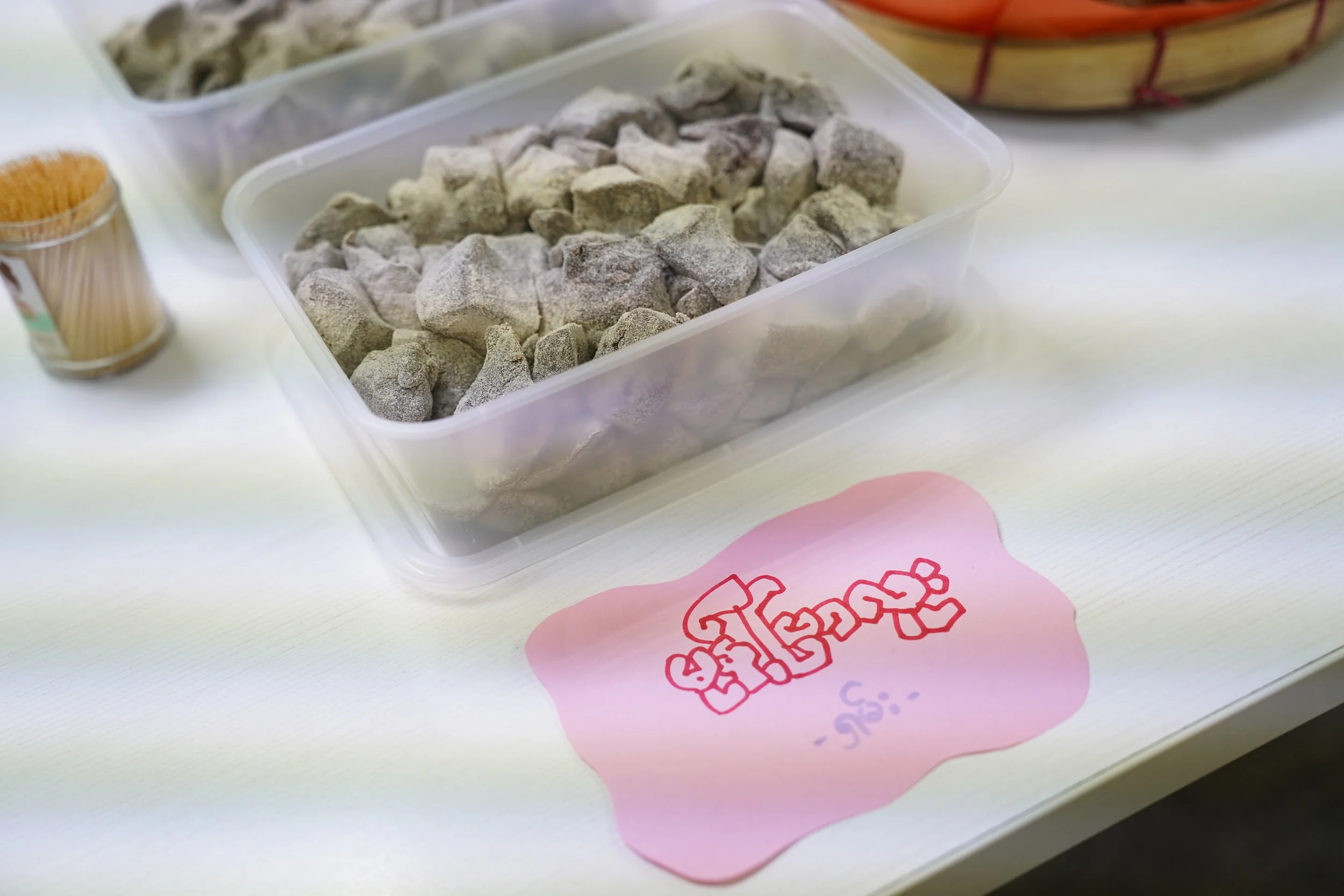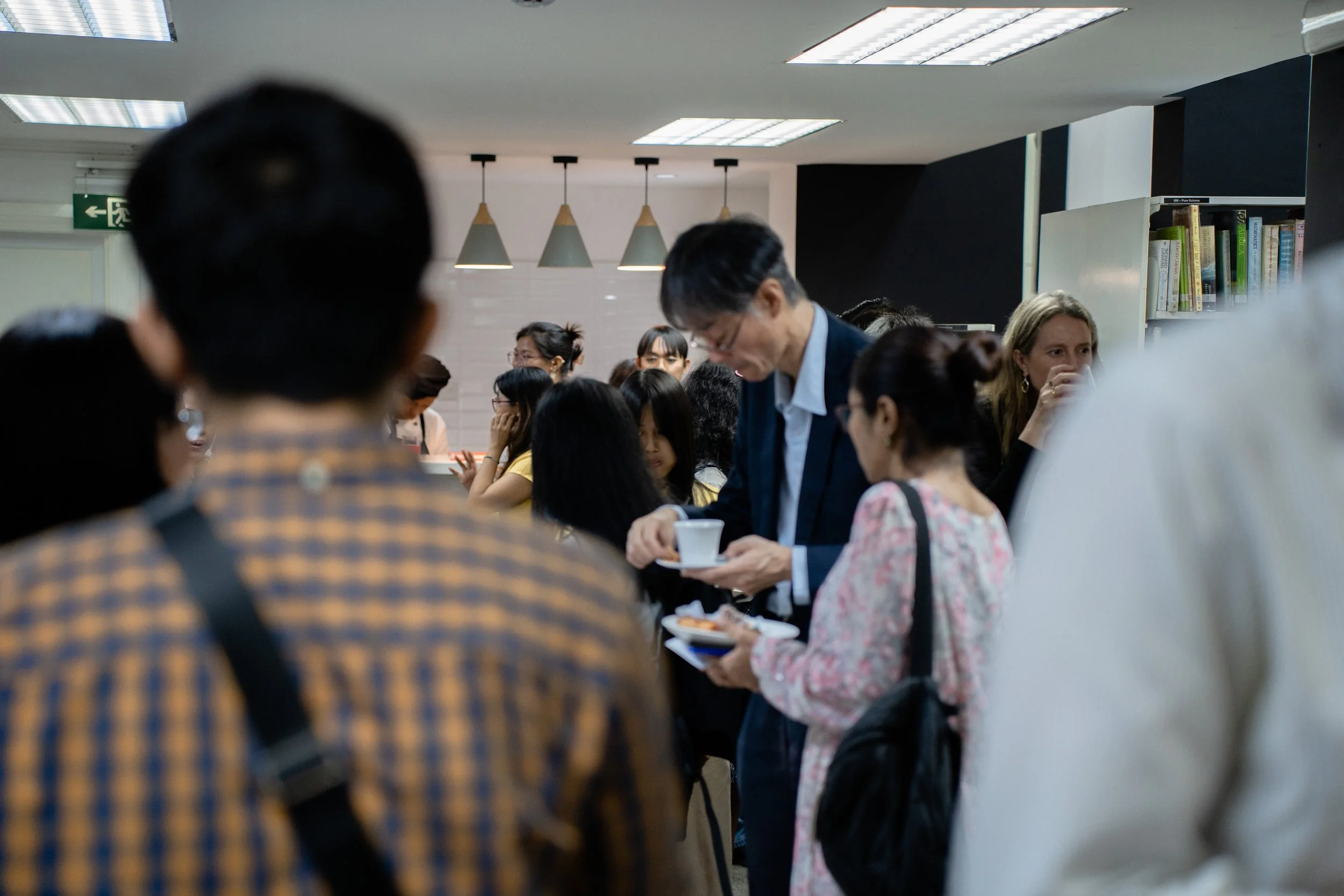Living Places, Living Knowledge: Sharing Session
AMCA has successful completed “Living Places, Living Knowledge" project sharing session on October 26, 2025 at British Council Yangon. The session featured both a presentation—detailing the Creative Asset Mapping process, methodologies, findings, and recommendations—and a mini exhibition of related project findings and statistics, followed by a hands-on traditional paper-cutting activity from the Mon region, guided by a local artist. We would also like to thank everyone who attended and participated with earnest interest in the interactive activities, the Q&A segment, and the follow-up networking sessions.
This project, a collaboration between AMCA and its UK Partner, Professor Sandra Dudley from the University of Leicester, was supported by the British Council's Connections Through Culture (CTC) Grants. The project's key objectives include: preserving creative forms in endangered zones, whether due to the impacts of environmental change or the destructive consequences in conflict areas; creating local maps showcasing tangible cultural assets, providing a valuable resource for future process; sharing findings with cultural experts of local and international, fostering a collaborative exchange of knowledge and insights; and inspiring further research to promote a deeper understanding of creative assets in the country.
Photos by: Hein Htet Zin
Letter of Appreciation
We extend our humble gratitude to everyone who attended AMCA's Living Places, Living Knowledge sharing session yesterday at British Council Yangon. Your presence, active participation, and valuable contributions in exchanging knowledge and sharing information made the event a success.
We formally extend our gratitude to:
First and foremost, our deepest appreciation goes to our ancestors who seeded their creative knowledge on this precious land.
Secondly, the local creators who continue to pass down and keep alive the traditions and practices they inherited, even in the face of many challenges. We also want to honour the guardians and caretakers who strive to preserve what they can, often with limited resources and under difficult circumstances.
We wish to express our profound gratitude to the British Council’s Connections Through Culture grants. Its invaluable support was instrumental in the growth and continuation of our Creative Asset Mapping project. Our sincere thanks also go to the British Council Yangon team for their continuous engagement and kind assistance throughout this endeavour.
This journey was made possible by the dedicated involvement of all participants and collaborators. We extend special gratitude to our UK partner, Prof. Sandra Dudley (University of Leicester), for her insightful contributions to heritage preservation, documentation, and mapping.
Our heartfelt appreciation goes to Ma Thu, Myanmar Project Lead, and Ashlay, Project Associate, for sharing local knowledge, practices, and resources, as well as for their steadfast support and guidance to all participants.
We also acknowledge the crucial support of the technical experts from Thibi Team, whose contributions since the pilot stage were instrumental in bringing our data to life through the digital map.
We are incredibly grateful to Min Chit Paing for the consecutive translations provided during the Prof. Dudley's lectures for the participants.
Finally, a tremendous thank you to the nine incredible participants from Mandalay, Mon, and Southern Shan regions. Their unwavering energy and commitment in actively gathering and documenting creative assets from their regions were the driving force behind the success of this mapping project.
We hope you discover something intriguing or inspiring for your future projects, or simply find a connection through the shared culture embedded in these tangible assets.
We would also be grateful if you could share the Living Places, Living Knowledge webpage with your network of researchers, archivists, archaeologists, cultural practitioners, and others who might find valuable information for their work or even potential collaborations of this mapping project with AMCA.
Sincerely,
AMCA

